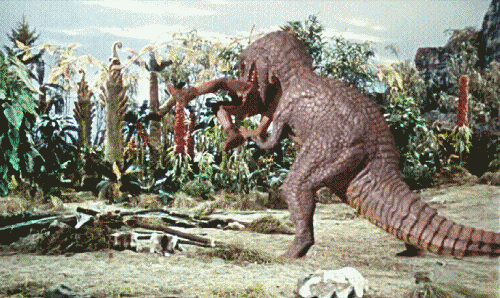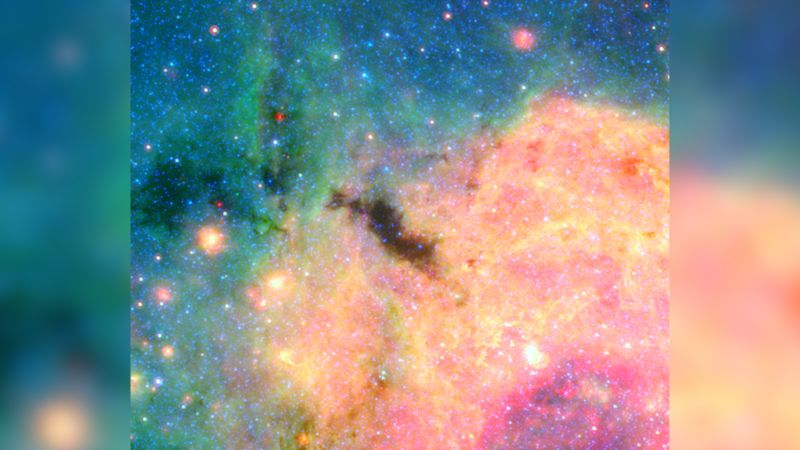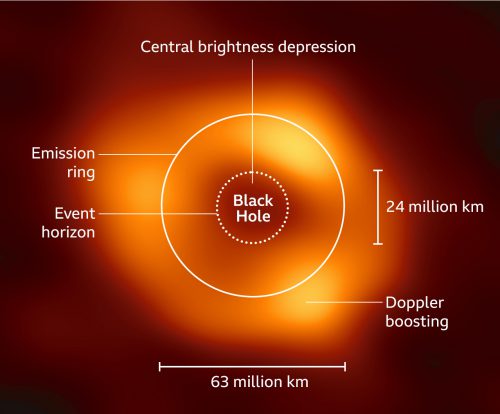Energy storage of the future? 'Hot rocks' in a box
A new "thermal battery" prototype in Fresno, California, could be the energy storage of the future.
https://us.cnn.com/videos/us/2023/12...kg-ctm-vpx.cnn
A new "thermal battery" prototype in Fresno, California, could be the energy storage of the future.
https://us.cnn.com/videos/us/2023/12...kg-ctm-vpx.cnn
Life may have everything it needs to exist on Saturn’s moon Enceladus
Scientists have long viewed Saturn’s moon Enceladus, which harbors an ocean beneath its thick, icy shell, as one of the best places to search for life beyond Earth.
Now, a new analysis of data collected by NASA’s Cassini mission, which orbited Saturn and its moons between 2004 and 2017, has uncovered intriguing evidence that further supports the idea of Enceladus as a habitable ocean world. ... The latest data analysis of Cassini’s flybys of Enceladus revealed the detection of a molecule called hydrogen cyanide that’s toxic to humans but crucial to processes driving the origin of life. What’s more, the team also found evidence to support that Enceladus’ ocean has organic compounds that provide a source of chemical energy that could potentially be used as powerful fuel for any form of life. ...
BELOW: Plumes can be seen releasing water vapor and organic compounds into space at the south pole of Saturn's moon Enceladus.

https://us.cnn.com/2023/12/15/world/...scn/index.html
Scientists have long viewed Saturn’s moon Enceladus, which harbors an ocean beneath its thick, icy shell, as one of the best places to search for life beyond Earth.
Now, a new analysis of data collected by NASA’s Cassini mission, which orbited Saturn and its moons between 2004 and 2017, has uncovered intriguing evidence that further supports the idea of Enceladus as a habitable ocean world. ... The latest data analysis of Cassini’s flybys of Enceladus revealed the detection of a molecule called hydrogen cyanide that’s toxic to humans but crucial to processes driving the origin of life. What’s more, the team also found evidence to support that Enceladus’ ocean has organic compounds that provide a source of chemical energy that could potentially be used as powerful fuel for any form of life. ...
BELOW: Plumes can be seen releasing water vapor and organic compounds into space at the south pole of Saturn's moon Enceladus.

https://us.cnn.com/2023/12/15/world/...scn/index.html
A Breakthrough in Genome Editing: How NICER Outperforms CRISPR/Cas9
The gene editing technique CRISPR/Cas9 has allowed researchers to make precise and impactful changes to an organism’s DNA to fix mutations that cause genetic disease. However, the CRISPR/Cas9 method can also result in unintended DNA mutations that may have negative effects. Recently, researchers in Japan have developed a new gene editing technique that is as effective as CRISPR/Cas9 while significantly reducing these unintended mutations.
... Researchers led by Osaka University develop a new gene modification technique known as NICER that significantly reduces off-target mutations in DNA. ...
https://scitechdaily.com/a-breakthro...s-crispr-cas9/
The gene editing technique CRISPR/Cas9 has allowed researchers to make precise and impactful changes to an organism’s DNA to fix mutations that cause genetic disease. However, the CRISPR/Cas9 method can also result in unintended DNA mutations that may have negative effects. Recently, researchers in Japan have developed a new gene editing technique that is as effective as CRISPR/Cas9 while significantly reducing these unintended mutations.
... Researchers led by Osaka University develop a new gene modification technique known as NICER that significantly reduces off-target mutations in DNA. ...
https://scitechdaily.com/a-breakthro...s-crispr-cas9/
NASA's images show solar flare that silenced radio signals on Earth
https://us.cnn.com/videos/us/2023/12...o-ebof-vpx.cnn
https://us.cnn.com/videos/us/2023/12...o-ebof-vpx.cnn
Quantum Leap: Princeton Physicists Successfully Entangle Individual Molecules for the First Time
For the first time, a team of Princeton physicists has been able to link together individual molecules into special states that are quantum mechanically “entangled.” In these bizarre states, the molecules remain correlated with each other—and can interact simultaneously—even if they are miles apart, or indeed, even if they occupy opposite ends of the universe. This research was published in the journal Science.
“This is a breakthrough in the world of molecules because of the fundamental importance of quantum entanglement,” said Lawrence Cheuk, assistant professor of physics at Princeton University and the senior author of the paper. “But it is also a breakthrough for practical applications because entangled molecules can be the building blocks for many future applications.”
These include, for example, quantum computers that can solve certain problems much faster than conventional computers, quantum simulators that can model complex materials whose behaviors are difficult to model, and quantum sensors that can measure faster than their traditional counterparts.
https://scitechdaily.com/quantum-lea...he-first-time/
For the first time, a team of Princeton physicists has been able to link together individual molecules into special states that are quantum mechanically “entangled.” In these bizarre states, the molecules remain correlated with each other—and can interact simultaneously—even if they are miles apart, or indeed, even if they occupy opposite ends of the universe. This research was published in the journal Science.
“This is a breakthrough in the world of molecules because of the fundamental importance of quantum entanglement,” said Lawrence Cheuk, assistant professor of physics at Princeton University and the senior author of the paper. “But it is also a breakthrough for practical applications because entangled molecules can be the building blocks for many future applications.”
These include, for example, quantum computers that can solve certain problems much faster than conventional computers, quantum simulators that can model complex materials whose behaviors are difficult to model, and quantum sensors that can measure faster than their traditional counterparts.
https://scitechdaily.com/quantum-lea...he-first-time/
Mysterious fast radio bursts in space keep getting stranger
Fast radio bursts, or bright, millisecond-long flashes of radio waves in space, are one of the most enduring mysteries of the cosmos — and they just became a little stranger.
The first fast radio burst, or FRB, was discovered in 2007, and since then, hundreds of these quick, intense events have been detected coming from distant points across the universe. In a thousandth of a second, the bursts can generate as much energy as the sun creates in one year or more, according to previous research.
But astronomers don’t understand what causes them.
Now, scientists have noticed a never-before-seen quirky pattern in a newly spotted repeating fast radio burst called FRB 20220912A. A study published Wednesday in the Monthly Notices of the Royal Astronomical Society details the discovery, which provides valuable clues to researchers aiming to identify the phenomenon’s source while introducing new enigmas to unravel. ... a closer look at the signal revealed something new: a noticeable drop in the center frequency of the bursts, acting like a celestial slide whistle.
The dip became even more obvious when the researchers converted the signals into sounds by using notes on a xylophone. High notes correspond to the beginning of the bursts, with low notes acting as the concluding tones. ... Astronomers suspect that some fast radio bursts may originate from magnetars, the powerfully magnetized cores of dead stars. But other research has suggested that collisions between dense neutron stars or dead stars called white dwarfs may be the cause. ...
Fast radio bursts, or bright, millisecond-long flashes of radio waves in space, are one of the most enduring mysteries of the cosmos — and they just became a little stranger.
The first fast radio burst, or FRB, was discovered in 2007, and since then, hundreds of these quick, intense events have been detected coming from distant points across the universe. In a thousandth of a second, the bursts can generate as much energy as the sun creates in one year or more, according to previous research.
But astronomers don’t understand what causes them.
Now, scientists have noticed a never-before-seen quirky pattern in a newly spotted repeating fast radio burst called FRB 20220912A. A study published Wednesday in the Monthly Notices of the Royal Astronomical Society details the discovery, which provides valuable clues to researchers aiming to identify the phenomenon’s source while introducing new enigmas to unravel. ... a closer look at the signal revealed something new: a noticeable drop in the center frequency of the bursts, acting like a celestial slide whistle.
The dip became even more obvious when the researchers converted the signals into sounds by using notes on a xylophone. High notes correspond to the beginning of the bursts, with low notes acting as the concluding tones. ... Astronomers suspect that some fast radio bursts may originate from magnetars, the powerfully magnetized cores of dead stars. But other research has suggested that collisions between dense neutron stars or dead stars called white dwarfs may be the cause. ...
Epilepsy Surgery Reveals Brain’s Secret Highways: The Role of Neural Hubs
A University of Iowa-led team of international neuroscientists have obtained the first direct recordings of the human brain in the minutes before and after a brain hub crucial for language meaning was surgically disconnected. The results reveal the importance of brain hubs in neural networks and the remarkable way in which the human brain attempts to compensate when a hub is lost, with immediacy not previously observed.
... Hubs are everywhere. The hub of a bicycle wheel, with spokes shooting out from the center, keeps the wheel from collapsing when the bicycle is ridden. Airport hubs connect cities across the world. And social hubs like coffee shops or online social networks are places people gather for interaction. The human brain has hubs, too – the intersection of many neuronal pathways that help coordinate brain activity required for complex functions like understanding and responding to speech. However, whether highly interconnected brain hubs are irreplaceable for certain brain functions has been controversial. By some accounts, the brain, as an already highly interconnected neural network, can in principle immediately compensate for the loss of a hub, in the same way that traffic can be redirected around a blocked-off city center. ... the researchers showed both the intrinsic importance of the hub as well as the remarkable and rapid ability of the brain to adapt and at least partially attempt to immediately compensate for its loss. The findings were reported recently in the journal Nature Communications.
... “The rapid impact on the speech and language processing regions well removed from the surgical treatment site was surprising, but what was even more surprising was how the brain was working to compensate, albeit incompletely, within this short timeframe,” says Petkov, who also holds an appointment at Newcastle University Medical School in the UK.
A University of Iowa-led team of international neuroscientists have obtained the first direct recordings of the human brain in the minutes before and after a brain hub crucial for language meaning was surgically disconnected. The results reveal the importance of brain hubs in neural networks and the remarkable way in which the human brain attempts to compensate when a hub is lost, with immediacy not previously observed.
... Hubs are everywhere. The hub of a bicycle wheel, with spokes shooting out from the center, keeps the wheel from collapsing when the bicycle is ridden. Airport hubs connect cities across the world. And social hubs like coffee shops or online social networks are places people gather for interaction. The human brain has hubs, too – the intersection of many neuronal pathways that help coordinate brain activity required for complex functions like understanding and responding to speech. However, whether highly interconnected brain hubs are irreplaceable for certain brain functions has been controversial. By some accounts, the brain, as an already highly interconnected neural network, can in principle immediately compensate for the loss of a hub, in the same way that traffic can be redirected around a blocked-off city center. ... the researchers showed both the intrinsic importance of the hub as well as the remarkable and rapid ability of the brain to adapt and at least partially attempt to immediately compensate for its loss. The findings were reported recently in the journal Nature Communications.
... “The rapid impact on the speech and language processing regions well removed from the surgical treatment site was surprising, but what was even more surprising was how the brain was working to compensate, albeit incompletely, within this short timeframe,” says Petkov, who also holds an appointment at Newcastle University Medical School in the UK.
Decoding Neuronal Diversity: Study Illuminates Key RNA Edits in Synapse Proteins
Neurons are talkers. They each communicate with fellow neurons, muscles, or other cells by releasing neurotransmitter chemicals at “synapse” junctions, ultimately producing functions ranging from emotions to motions. But even neurons of the exact same type can vary in their conversational style. A new open-access study published in the journal Cell Reports by neurobiologists at The Picower Institute for Learning and Memory highlights a molecular mechanism that might help account for the nuanced diversity of neural discourse. ...
... They found that a protein, complexin, plays a vital role in controlling neurotransmitter release. The study showed that RNA editing of complexin results in different versions of the protein, affecting how neurons communicate and grow synapses.
https://scitechdaily.com/decoding-ne...apse-proteins/
Neurons are talkers. They each communicate with fellow neurons, muscles, or other cells by releasing neurotransmitter chemicals at “synapse” junctions, ultimately producing functions ranging from emotions to motions. But even neurons of the exact same type can vary in their conversational style. A new open-access study published in the journal Cell Reports by neurobiologists at The Picower Institute for Learning and Memory highlights a molecular mechanism that might help account for the nuanced diversity of neural discourse. ...
... They found that a protein, complexin, plays a vital role in controlling neurotransmitter release. The study showed that RNA editing of complexin results in different versions of the protein, affecting how neurons communicate and grow synapses.
https://scitechdaily.com/decoding-ne...apse-proteins/
DNA Tells All: The True Culprits Behind the Fall of Earth’s Largest Beasts
For years, scientists have debated whether humans or the climate caused the population of large mammals to decline dramatically over the past several thousand years. A new study from Aarhus University confirms that climate cannot be the explanation. ... By studying the DNA of 139 living species of large mammals, the scientists have been able to show that abundances of almost all species fell dramatically about 50,000 years ago. ... https://scitechdaily.com/dna-tells-a...argest-beasts/
For years, scientists have debated whether humans or the climate caused the population of large mammals to decline dramatically over the past several thousand years. A new study from Aarhus University confirms that climate cannot be the explanation. ... By studying the DNA of 139 living species of large mammals, the scientists have been able to show that abundances of almost all species fell dramatically about 50,000 years ago. ... https://scitechdaily.com/dna-tells-a...argest-beasts/
Why Do We Age? The Surprising Evolutionary Advantage Revealed
Researchers used computer models to investigate the evolutionary role of aging. They challenge the notion that aging has no positive function, suggesting it might expedite evolution in changing environments, thereby benefiting subsequent generations. Their findings indicate that aging could be an advantageous trait selected by natural evolution. ...
... After running the model, the Hungarian biologists found that aging can indeed accelerate evolution. This is advantageous in a changing world because the faster adaptation can find the adequate traits more quickly, thereby supporting the survival and spread of descendent genes. This means that senescence can become a really advantageous characteristic and be favored by natural selection.
https://scitechdaily.com/why-do-we-a...tage-revealed/
Researchers used computer models to investigate the evolutionary role of aging. They challenge the notion that aging has no positive function, suggesting it might expedite evolution in changing environments, thereby benefiting subsequent generations. Their findings indicate that aging could be an advantageous trait selected by natural evolution. ...
... After running the model, the Hungarian biologists found that aging can indeed accelerate evolution. This is advantageous in a changing world because the faster adaptation can find the adequate traits more quickly, thereby supporting the survival and spread of descendent genes. This means that senescence can become a really advantageous characteristic and be favored by natural selection.
https://scitechdaily.com/why-do-we-a...tage-revealed/
Mysterious Anatomy Unraveled – Stanford Scientists Uncover Location of Starfish’s Head
... a new Stanford study that used genetic and molecular tools to map out the body regions of starfish – by creating a 3D atlas of their gene expression – helps answer this longstanding mystery. The “head” of a starfish, the researchers found, is not in any one place. Instead, the headlike regions are distributed with some in the center of the sea star as well as in the center of each limb of its body. ...
“There are 34 different animal phyla living on this planet and in over roughly 600 million years they have all come up with different solutions to the same fundamental biological problems,” Lowe said. “Most animals don’t have spectacular nervous systems and are out chasing prey – they are modest animals that live in burrows in the ocean. People are generally not drawn to these animals, and yet they probably represent how much of life got started.” ...
https://scitechdaily.com/mysterious-...tarfishs-head/
... a new Stanford study that used genetic and molecular tools to map out the body regions of starfish – by creating a 3D atlas of their gene expression – helps answer this longstanding mystery. The “head” of a starfish, the researchers found, is not in any one place. Instead, the headlike regions are distributed with some in the center of the sea star as well as in the center of each limb of its body. ...
“There are 34 different animal phyla living on this planet and in over roughly 600 million years they have all come up with different solutions to the same fundamental biological problems,” Lowe said. “Most animals don’t have spectacular nervous systems and are out chasing prey – they are modest animals that live in burrows in the ocean. People are generally not drawn to these animals, and yet they probably represent how much of life got started.” ...
https://scitechdaily.com/mysterious-...tarfishs-head/
stlah





































Leave a comment: